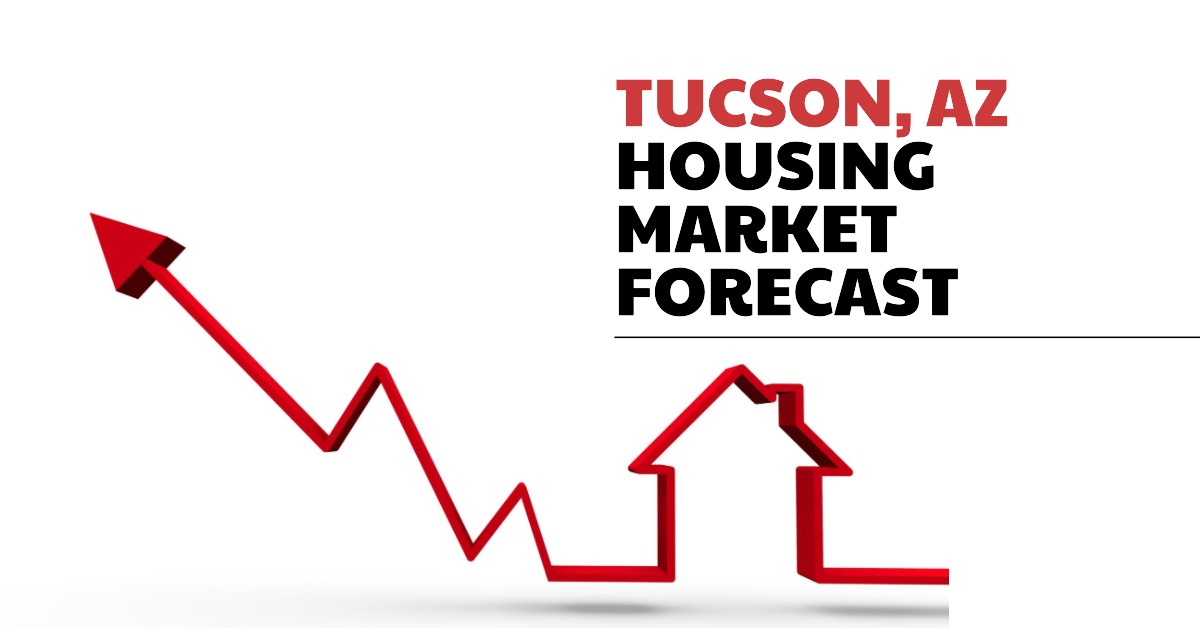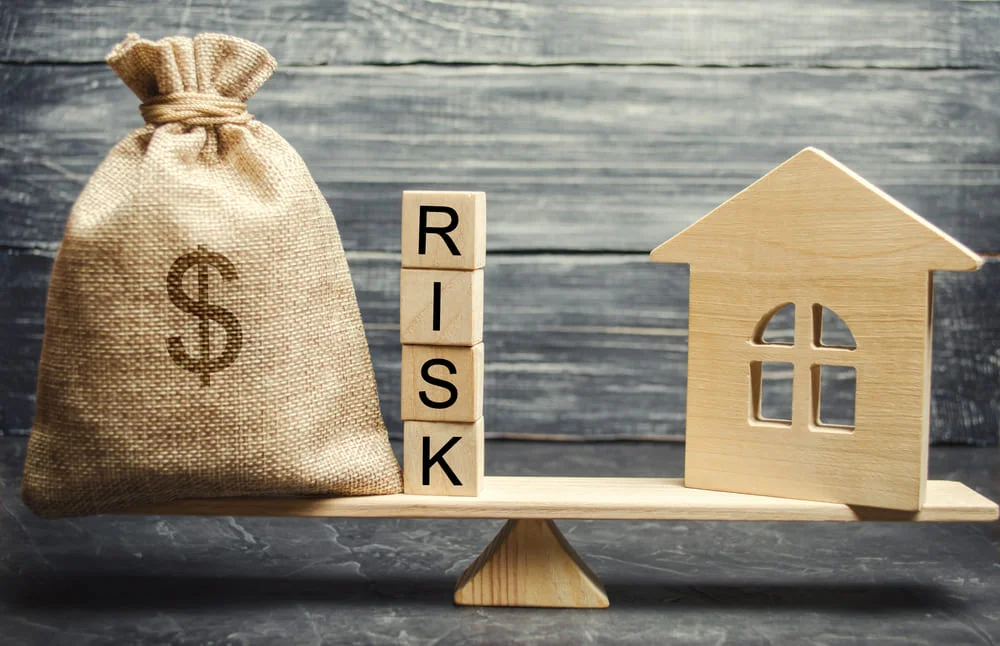If you're thinking about buying or selling a home in Tucson, or just curious about what's going on with houses here, you're in the right place. The Tucson real estate market is showing some interesting signs. While prices have seen a slight dip recently, the overall picture for 2025 suggests a stabilization with potential for slow, steady growth.
It's not a market that's crashing, nor is it on fire, but it's definitely shifting. Let's break down what the current trends are telling us and then peek into the crystal ball for what the housing market forecast might look like for Tucson.
Tucson Real Estate Market: What's Happening Now in 2025?
Looking at the most recent data from Realtor.com for September, we can see a few things really standing out. It's like looking at the weather report for our housing market – sometimes sunny, sometimes a little cloudy, but always providing clues about what's to come.
Home Prices: A Slight Cool Down
One of the biggest questions on everyone's mind is, “Are home prices going up or down?” In September, the data showed that Tucson home prices were down slightly from the month before. The median listing price was $374,200. Now, this might sound alarming, but it's important to put it in context.
Typically, September is a time when prices per square foot in Tucson usually climb a bit. However, this year, we saw a slight decrease of 0.4% compared to August. This might sound like a big deal, but when you compare it to the national trend, where the price per square foot dropped by 0.8%, Tucson's numbers are actually looking pretty stable. So, while prices are adjusting, it's not a dramatic fall, especially when compared to the rest of the country.
Housing Inventory: More Homes, But Not Too Many
Another crucial piece of the puzzle is housing inventory, or how many homes are actually for sale. In September, there were 2,559 homes for sale in Tucson. This is a good sign for buyers because it’s 2.5% more than the month before and a significant 28.7% more than this time last year. More options usually mean a more balanced market, giving buyers a bit more breathing room.
What's interesting is that while inventory is up, the increase from last month is smaller than what we typically see for this time of year in Tucson. This suggests that while more homes are available, it's not an overwhelming flood. Nationally, active inventory only rose by a small 0.2%, so Tucson is actually seeing a more noticeable increase in available homes.
The number of new listings also increased, with 1,002 homes hitting the market. That's 21.6% more than the previous month and 1.4% more than last year. Again, nationally, new listings actually fell by 1.8%. This points to Tucson being a bit of an outlier in terms of new homes coming onto the market.
Time on Market: Homes Selling Slower
With more homes available and perhaps a bit more caution from buyers, it's no surprise that homes are taking a little longer to sell. In September, homes in Tucson were taking an average of 62 days to sell. This is a couple of days longer than the month before and 11 days longer than this time last year.
To put it in perspective, nationally, homes also spent an average of 62 days on the market in September. So, while homes are selling slower than last year in Tucson, we're right in line with the national average. This suggests a market that's moving at a more measured pace, which can be good for both buyers and sellers who are looking for reasonable timelines.
Buyer's vs. Seller's Market: A Shifting Balance
Right now, Tucson is in a bit of a transitional phase. With more homes on the market and homes taking longer to sell, it's leaning away from a strong seller's market and moving towards a more balanced market. This means buyers have more power than they did a year or two ago. They have more choices, more time to make decisions, and can potentially negotiate more effectively. However, it's not a full-blown buyer's market where prices are plummeting. Sellers still have demand, but they need to be more realistic with their pricing and presentation.
Tucson Housing Market Forecast 2025 and 2026
Now, let's peer into the future. Predicting the housing market is never an exact science, but by looking at forecasts from reliable sources, we can get a good idea of what to expect.
Tucson's Outlook for 2025
According to Zillow's data, the average Tucson home value is currently around $342,635, and it has decreased by 3.4% over the past year. Homes are pending in about 40 days. Looking ahead, the forecast from Zillow's MSA (Metropolitan Statistical Area) shows some interesting projections:
| Timeframe | Tucson, AZ Home Value Change |
|---|---|
| Oct 2025 | -0.2% |
| Dec 2025 | -0.4% |
| Next 1-Year (Sep 2026) | +0.6% |
What does this tell us? For the remainder of 2025, Zillow is projecting a slight continued dip in home values, ending the year with a small negative change. This suggests that the market might not see significant price increases within the next year, and there could be continued minor adjustments.
However, the forecast for the year from September 2025 to September 2026 shows a positive growth of 0.6%. This indicates that after a period of stabilization or slight decline, the market is expected to start seeing modest appreciation again. It’s a sign of the market finding its footing and starting to grow again, albeit at a more sustainable pace.
Comparing Tucson to Other Arizona Markets
It's always helpful to see how Tucson stacks up against other cities in Arizona. Here's a look at the forecast for different MSAs in the state:
| Region Name | Oct 2025 | Dec 2025 | Next 1-Year (Sep 2026) |
|---|---|---|---|
| Phoenix, AZ | -0.2% | -0.7% | +0.6% |
| Tucson, AZ | -0.2% | -0.4% | +0.6% |
| Lake Havasu City, AZ | +0.1% | +0.1% | +1.0% |
| Yuma, AZ | +0.2% | +0.5% | +3.5% |
| Flagstaff, AZ | +0.2% | +0.6% | +3.8% |
| Sierra Vista, AZ | +0.1% | +0.2% | +0.8% |
(Source: Zillow)
As you can see, Tucson and Phoenix are projected to have similar trends for the next year, with slight decreases followed by modest growth. Cities like Yuma and Flagstaff are showing stronger growth potential in the longer term. This comparison highlights that while Tucson's market is unique, it's also following some broader statewide trends.
National Housing Market Forecast: A Ray of Hope
Let's zoom out and look at the national picture, which heavily influences local markets like ours.
Zillow's Key Predictions:
- Home Value Growth: After a relatively flat 2025, home value growth is expected to pick up in 2026, potentially reaching nearly 1.9% by August 2026. This means a gradual recovery after a period of slower growth.
- Home Sales: The number of home sales is predicted to finish 2025 at around 4.07 million, which is a bit higher than 2024. This suggests an increase in buyer activity.
- Rents: Rent growth is expected to continue to cool down, with lower growth rates by the end of 2025 compared to previous years.
NAR Chief Economist Lawrence Yun's Optimistic Outlook:
Lawrence Yun from NAR has a notably optimistic view:
- Existing Home Sales: He forecasts a 6% rise in 2025 and an even stronger 11% jump in 2026. This points to a significant comeback in the number of homes being bought and sold.
- New Home Sales: Expected to increase by 10% in 2025 and another 5% in 2026. This growth in new construction is vital for helping to ease the ongoing shortage of homes.
- Median Home Prices: Yun anticipates modest price increases, with a projected rise of 3% in 2025 and 4% in 2026. This signals a return to more sensible price appreciation.
- Mortgage Rates: The forecast for mortgage rates is also positive. They are expected to average 6.4% in the latter half of 2025 and then dip further to 6.1% in 2026. Yun calls these rates a “magic bullet” because they are so critical for making homes affordable and driving demand.
The national forecast, especially from NAR, paints a picture of a market that is recovering and expected to see more sales and modest price growth driven by more favorable mortgage rates. This is great news for potential buyers and sellers alike, suggesting a return to a more stable and predictable market.
So, Will Home Prices Drop in Tucson? Can it Crash?
Based on the current trends and the forecasts we've looked at, a crash in the Tucson housing market seems unlikely. The data points towards a stabilization and then a slow, steady recovery.
- Prices are adjusting, not collapsing: While we saw a slight dip in September, it was minor and less severe than the national average. The forecast suggests continued minor adjustments in the short term, but then a slow return to growth.
- Inventory is increasing, but not excessively: The rise in homes for sale is a positive sign for buyers, leading to a more balanced market, but it's not creating an oversupply that would force prices down drastically.
- Mortgage rates are key: As mortgage rates are predicted to ease, affordability will improve, which should support demand and home prices.
My take on this: The market isn't going to see the rapid appreciation of a few years ago, and that's probably a good thing for long-term stability. We're moving into a more sustainable phase where prices will likely increase gradually, reflecting underlying demand and economic conditions. For buyers, this means potentially more negotiation power and less pressure to make rushed decisions. For sellers, it means being realistic about pricing and presenting your home in the best possible light.
Possible Forecast for End of 2026 and Early 2027
Looking beyond the immediate forecast, if the trends of stabilization and modest growth continue, we can anticipate the following for the end of 2026 and early 2027:
- Continued Modest Price Appreciation: Building on the projected 0.6% growth from Sept 2025-Sept 2026, home prices in Tucson are likely to continue their slow and steady climb. We might see annual appreciation in the 2-4% range, similar to what NAR predicts nationally. This assumes no major economic shocks or drastic shifts in mortgage rates.
- Increased Home Sales Volume: With potentially lower mortgage rates and improved affordability, the number of home sales should remain strong, possibly even exceeding 2025 levels. The market will likely feel more active than it has in the past year or two.
- Inventory Levels: Inventory might remain somewhat tight, especially for desirable properties, as demand continues to meet supply. However, it should be sufficient to prevent a return to intense bidding wars. We’ll likely see a balanced market where buyers have choices but sellers still receive fair offers.
- Rental Market: Rents may continue to see slower growth, potentially stabilizing or seeing very modest increases as homeownership becomes more accessible to a wider range of buyers.
In essence, by the end of 2026 and into early 2027, the Tucson housing market is likely to be in a healthy, balanced state, characterized by steady price growth, consistent sales activity, and a good level of housing availability. It's a market that rewards patience and informed decision-making, rather than speculation.
Why Consider Tucson for Real Estate Investment?
The allure of the Wild West, a vibrant cultural scene, and the majestic beauty of the Sonoran Desert – Tucson, Arizona, offers more than meets the eye. But what about Tucson real estate investment? Is it a wise financial move? With its affordable housing market, growing job sector, and high quality of life, Tucson has become a hot spot for real estate investors seeking lucrative opportunities.
Tucson presents a compelling case for real estate investors, thanks to its unique blend of affordability, growth potential, and desirable lifestyle. Let's break down the key factors driving investor interest:
1. Affordability Compared to Other Major Cities
One of the biggest draws for real estate investors in Tucson is its affordability. Compared to other major cities in Arizona and across the nation, Tucson boasts a significantly lower cost of living, especially when it comes to housing. Affordability in housing costs allows investors to enter the market at a lower price point, potentially maximizing their return on investment.
2. A Growing Job Market Fueling Population Growth
Tucson's economy has been steadily diversifying and expanding, attracting new residents and driving demand for housing. Key industries contributing to this growth include:
- Aerospace and Defense: Home to Davis-Monthan Air Force Base and Raytheon Missiles & Defense, Tucson boasts a strong presence in the aerospace and defense sector.
- Healthcare: Banner University Medical Center and Tucson Medical Center, two major healthcare providers, are major employers in the region.
- Education: The University of Arizona, a renowned research institution, is a significant economic driver, employing thousands and attracting a large student population.
- Technology: Tucson is witnessing a surge in tech startups and established companies, particularly in the fields of optics, biotechnology, and renewable energy.
This robust job market has resulted in consistent population growth, further fueling the demand for housing and making Tucson real estate a sound investment.
3. High Quality of Life Attracting Residents
Beyond affordability and job opportunities, Tucson offers an enviable quality of life that attracts residents from all walks of life.
- Outdoor Recreation: Surrounded by breathtaking mountain ranges, Tucson is an outdoor enthusiast's paradise, offering ample opportunities for hiking, biking, rock climbing, and more.
- Rich Culture and History: From historic sites like Mission San Xavier del Bac to vibrant art galleries and museums, Tucson boasts a rich cultural heritage.
- Foodie Paradise: Tucson holds the distinction of being a UNESCO City of Gastronomy, renowned for its diverse culinary scene and authentic Southwestern flavors.
- Sunny Weather: With over 300 days of sunshine per year, Tucson offers residents an abundance of opportunities to enjoy the outdoors.
This combination of factors contributes to Tucson's desirability as a place to live, making it an attractive market for real estate investors seeking long-term growth.
Best Neighborhoods for Real Estate Investment in Tucson
Tucson offers a diverse range of neighborhoods, each with its own unique character and investment potential. Here are a few noteworthy areas for real estate investors to consider:
1. Downtown Tucson: A Hub for Young Professionals and Urban Dwellers
- Overview: Downtown Tucson has undergone a significant revitalization in recent years, transforming into a vibrant hub for young professionals, students, and urban dwellers.
- Investment Potential: The area offers a mix of historic properties, renovated lofts, and new condo developments, attracting both renters and buyers seeking a walkable lifestyle close to amenities.
- Key Features: Lively nightlife, trendy restaurants, cultural attractions, proximity to the University of Arizona.
2. Sam Hughes: A Charming Historic Neighborhood with Character
- Overview: Nestled east of the University of Arizona, Sam Hughes exudes charm and character with its tree-lined streets, historic homes, and a strong sense of community.
- Investment Potential: This highly desirable neighborhood attracts families and professionals seeking a peaceful and established community close to the university and downtown.
- Key Features: Historic architecture, mature landscaping, family-friendly atmosphere, close proximity to the University of Arizona.
3. Armory Park: A Historic Gem with Growing Appeal
- Overview: Located just south of downtown, Armory Park is a historic neighborhood that has experienced significant revitalization in recent years, attracting a mix of young professionals, families, and artists.
- Investment Potential: The area offers a mix of restored historic homes and new construction, presenting opportunities for investors seeking character and value appreciation.
- Key Features: Historic architecture, proximity to downtown, walkable streets, growing arts and culture scene.
4. Catalina Foothills: Upscale Living with Scenic Views
- Overview: Nestled at the base of the Santa Catalina Mountains, Catalina Foothills offers upscale living with breathtaking mountain views and a tranquil atmosphere.
- Investment Potential: This affluent neighborhood attracts high-end buyers seeking luxury homes with privacy and scenic beauty.
- Key Features: Luxury homes, breathtaking views, hiking trails, upscale shopping and dining, highly rated schools.
5. Civano: A Sustainable and Eco-Friendly Community**
- Overview: Civano is a master-planned community on the southeast side of Tucson, known for its focus on sustainability, energy efficiency, and community living.
- Investment Potential: This unique neighborhood attracts environmentally conscious buyers seeking a sustainable lifestyle and a strong sense of community.
- Key Features: Eco-friendly homes, community gardens, walking trails, solar power, close-knit community.
Is Tucson Right for You?
Tucson real estate investment presents a compelling opportunity for investors seeking affordability, growth potential, and a high quality of life. With its thriving job market, steady appreciation, and diverse range of neighborhoods, Tucson offers something for every investor.
However, it's crucial to conduct thorough research, weigh the potential risks and rewards, and consult with experienced professionals before making any decisions. By approaching Tucson real estate with careful planning and a long-term perspective, you can position yourself for success in this vibrant and growing market.
Build Wealth with Turnkey Real Estate — Even in a High-Rate Market
High interest rates don’t have to hold you back. Turnkey rental properties still deliver steady cash flow and long-term appreciation—especially in markets with strong rental demand and job growth.
Work with Norada Real Estate to identify profitable, cash-flowing markets that thrive even when borrowing costs rise—so your investments stay strong and stress-free.
NEW TURNKEY DEALS JUST ADDED!
Talk to a Norada investment counselor today (No Obligation):
(800) 611-3060
Read More:
- AZ Housing Market Forecast 2025-2026: Will it Crash?
- Arizona Housing Market: Trends and Forecast
- Arizona's Housing Crisis: Young Adults Struggling to Find Home
- 5 Cities Where Home Prices Are Predicted To Crash in 2025
- Best Places to Buy a House in 2025: Up-and-Coming Markets
- Phoenix Housing Market: Trends and Forecast





